If you’re learning Python or already coding your way through projects, you don’t necessarily need to spend a fortune on a high-end machine. A solid budget laptop can handle Python programming just fine, as long as it offers decent performance, good battery life, and a comfortable keyboard. In this guide, we’ll break down the best affordable options for 2025 so you can focus on coding without worrying about your wallet.
Python Laptop Requirements
- Operating System: Windows 10/11, macOS, or Linux
- Processor: Intel Core i5 or AMD Ryzen 5 (or equivalent)
- RAM: 16 GB
- Storage: 512 GB SSD
- Graphics card (GPU): NVIDIA GeForce GTX 1050 or AMD Radeon RX 560 (or equivalent)
Also Read: Best Laptops for Programming Students
Best Budget Laptops for Python Coding in 2025
- HP Victus 15 Full HD 144Hz Gaming Laptop ($649)
- SAMSUNG 15 Galaxy Book3 Business Laptop ($1,195)
- Apple MacBook Pro Laptop M4 chip ($1,547)
- Dell Precision 3000 Series 3571 Mobile Workstation ($1,050)
- Lenovo LOQ Gaming Laptop ($739)
- ASUS Zenbook 14 Flip OLED Laptop ($1,054)
1. HP Victus (Best gaming laptop for Python programming)
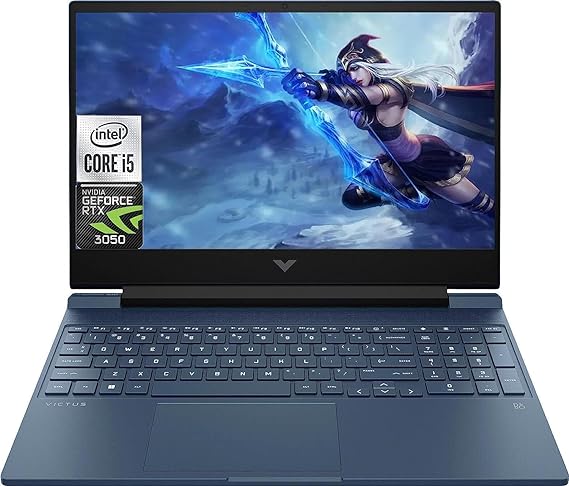
| Model Name | HP Victus Gaming Laptop |
| Screen Size | 15.6 Inches |
| Color | Blue |
| Hard Disk Size | 512 GB |
| CPU Model | Core i5-12500H |
| Ram Memory Installed Size | 16 GB |
| Operating System | Windows |
| Special Feature | Backlit Keyboard |
| Graphics Card Description | NVIDIA GeForce RTX 3050 6GB Dedicated |
The HP Victus Gaming Laptop, despite being marketed as a gaming laptop, actually offers several features that make it a good choice for Python programming on a budget.
- Intel Core i5 13th Gen Processor: The Intel Core i5 13420H processor is powerful enough to handle Python programming tasks efficiently. With a base clock speed of 1.5GHz and Turbo Boost capabilities, it can easily handle the computational demands of running Python scripts and applications.
- NVIDIA GeForce RTX 3050 Graphics Card: While primarily designed for gaming, the NVIDIA GeForce RTX 3050 GPU also provides ample graphical processing power that can be beneficial for data visualization tasks in Python, especially when working with libraries like Matplotlib or Seaborn.
- 16GB DDR4 RAM: Although 16GB of RAM may be considered somewhat modest for heavy multitasking or large dataset processing, it’s sufficient for most Python programming tasks, including web development, data analysis, and machine learning prototyping.
- 512GB Solid State Drive: The spacious SSD offers quick data access and storage, which is essential for Python programming. It allows for faster loading of IDEs, libraries, and datasets, enhancing overall workflow efficiency.
- 15.6″ FHD IPS Display: The 15.6″ Full HD IPS display with a 144Hz refresh rate provides a crisp and immersive viewing experience. While primarily geared towards gaming, the high-resolution display is also beneficial for long coding sessions, offering better clarity and reducing eye strain.
Overall, the HP Victus Gaming Laptop offers a balanced combination of performance and affordability, making it a suitable choice for budget-conscious Python programmers who also enjoy occasional gaming sessions. Its capable hardware specifications ensure smooth operation and responsiveness, enabling users to comfortably work on Python projects without breaking the bank.
2. SAMSUNG Galaxy Book3 (Best budget laptop for programming)
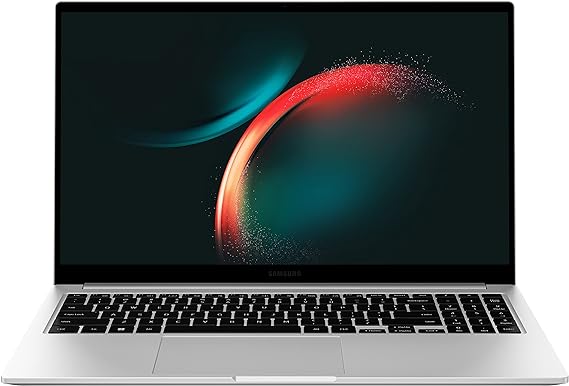
| Brand | SAMSUNG |
| Screen Size | 15.6 Inches |
| Color | Silver |
| Hard Disk Size | 512 GB |
| CPU Model | Core i7 |
| Ram Memory Installed Size | 16 GB |
| Operating System | Windows 11 Pro |
| Special Feature | HD Audio |
| Graphics Card Description | Dedicated Intel Iris Xe Graphics |
The SAMSUNG Galaxy Book3, despite being labeled as a “Business Laptop,” offers several features that make it a suitable choice for Python programming on a budget:
- Core i7 CPU: The Core i7 processor provides ample computing power for Python programming tasks. It offers fast processing speeds, which is beneficial when running complex algorithms or handling large datasets.
- 16 GB RAM: With 16 GB of RAM, the laptop can handle multitasking and memory-intensive Python applications smoothly. This capacity ensures that you can run multiple Python scripts, IDEs, or development environments simultaneously without experiencing significant slowdowns.
- 512 GB Hard Disk: The 512 GB hard disk provides ample storage space for Python libraries, datasets, and project files. It allows programmers to store their codebases, virtual environments, and various data sets without worrying about running out of storage space quickly.
- Windows 11 Pro Operating System: While Python is platform-independent, having a stable and modern operating system like Windows 11 Pro ensures compatibility with popular Python development environments such as PyCharm, Anaconda, and Jupyter Notebook. It also provides access to a wide range of development tools and software packages.
- Intel Iris Xe Graphics: While primarily focused on business tasks, the Intel Iris Xe Graphics card can handle basic graphical tasks and visualization tasks often associated with Python programming, such as data visualization with libraries like Matplotlib or Seaborn.
- HD Audio: While not directly related to programming, HD audio can enhance the overall user experience, making it more enjoyable for users who like to listen to music or watch coding tutorials while programming.
- 15.6 Inches Screen Size: The 15.6-inch screen size provides a comfortable viewing experience for coding sessions, allowing users to view multiple lines of code simultaneously without straining their eyes.
Overall, the SAMSUNG Galaxy Book3 Business Laptop offers a powerful combination of performance, storage, and features at a reasonable price point, making it a suitable choice for budget-conscious Python programmers.
3. MacBook Pro (Best laptop for programming students)
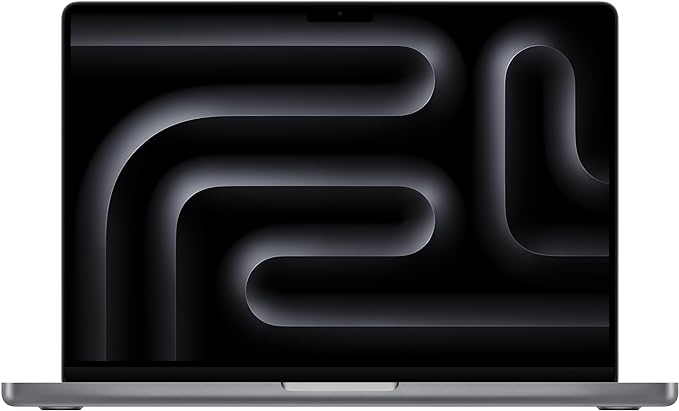
| Model Name | MacBook Pro |
| Screen Size | 14.2 Inches |
| Color | Space Gray |
| Hard Disk Size | 512 GB |
| Ram Memory Installed Size | 8 GB |
| Operating System | Mac OS |
| Graphics Card Description | Apple Integrated Graphics |
While the Apple MacBook Pro described offers powerful features tailored for professional workloads such as editing photos and videos, its capabilities also make it an excellent choice for Python programming, even for those on a budget. Here’s why:
- Processing Power: The M4 chip with its 8-core CPU and 10-core GPU provides ample processing power for Python programming tasks. Whether you’re running complex algorithms, handling large datasets, or engaging in data visualization, the MacBook Pro’s hardware can handle it efficiently.
- Battery Life: With up to 22 hours of battery life, you can code for extended periods without worrying about running out of power. This is especially useful for programmers who work remotely or need to code on the go without easy access to power outlets.
- Display Quality: The 14.2-inch Liquid Retina XDR display offers excellent clarity and color accuracy, enhancing the coding experience. Clear text and vibrant visuals are essential for long coding sessions, reducing eye strain and improving productivity.
- Compatibility and Performance: The MacBook Pro is fully compatible with development tools and environments commonly used for Python programming, such as Visual Studio Code, PyCharm, Jupyter Notebooks, and more. The advanced hardware ensures smooth performance even when running resource-intensive tasks or multiple development environments simultaneously.
- Connectivity: The MacBook Pro provides various connectivity options, including Thunderbolt / USB 4 ports, an SDXC card slot, HDMI port, and headphone jack. These ports allow for seamless integration with external displays, peripherals, and data storage devices, enhancing the versatility of the laptop for programming needs.
- Security and Durability: The MacBook Pro comes with advanced security features, including encryption and robust virus protection, ensuring the safety of your code and data. Additionally, its durable aluminum unibody enclosure and free software updates contribute to its longevity, making it a sound investment for budget-conscious programmers.
Overall, the Apple MacBook Pro offers a compelling combination of performance, portability, and reliability, making it an excellent choice for Python programming, even for those looking for a budget-friendly option.
4. Dell Precision 3000 Series 3571 Mobile Workstation
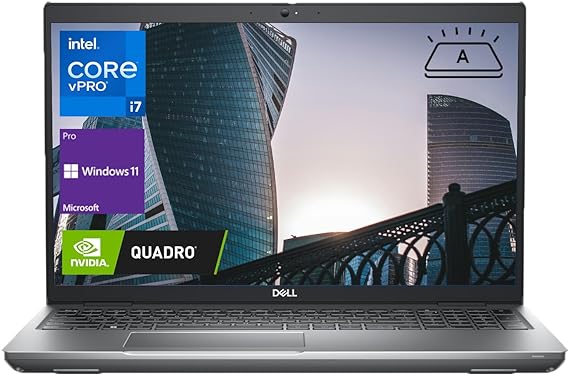
| Model Name | Precision 3571 |
| Screen Size | 15.6 Inches |
| Color | Grey |
| Hard Disk Size | 1 TB |
| CPU Model | Core i7 Family |
| Ram Memory Installed Size | 32 GB |
| Operating System | Windows 11 Pro |
| Special Feature | Backlit Keyboard |
| Graphics Card Description | NVIDIA Quadro T600 Dedicated |
While the Dell Precision 3000 Mobile Workstation might seem like a high-end choice at first glance, it actually offers excellent value for Python programming within a budget. Here’s why:
- Powerful Processor: The 12th Gen Intel vPro Core i7-12800H processor with 14 cores and 20 threads provides ample computing power for running Python scripts, handling data processing tasks, and running multiple applications simultaneously without slowdowns.
- High-Speed RAM: 32GB DDR5 RAM ensures smooth multitasking, which is crucial for Python developers who often work with resource-intensive applications, such as IDEs, data analysis tools, and virtual environments.
- Large Storage Space: The 1TB PCIe M.2 Solid State Drive not only enables fast boot-up times but also provides ample storage for large datasets, libraries, and project files commonly used in Python development.
- Graphics Card: While Python programming typically doesn’t require heavy graphics processing, having the NVIDIA Quadro T600 with 4GB GDDR6 ensures smooth rendering if you’re dealing with any visualization tasks or working with machine learning libraries like TensorFlow or PyTorch.
- Connectivity Options: The presence of Thunderbolt 4 USB-C ports, USB 3.2 Gen 1 ports, HDMI 2.0 port, and Wi-Fi 6 & Bluetooth provides excellent connectivity options for connecting external displays, peripherals, and networking devices, essential for collaboration and productivity in Python programming.
- Windows 11 Pro: The inclusion of Windows 11 Pro offers enterprise-grade security features and enhanced productivity tools like remote desktop and Cortana, which can be beneficial for professional Python developers working in corporate environments.
- Display: Although not the highest resolution or refresh rate, the 15.6-inch FHD display with anti-glare technology provides a comfortable viewing experience for long coding sessions, ensuring minimal eye strain.
Overall, while the Dell Precision 3000 Mobile Workstation may not be the cheapest option, its powerful hardware configuration, ample storage, and connectivity options make it a solid investment for Python programming within a reasonable budget.
5. Lenovo LOQ Gaming Laptop
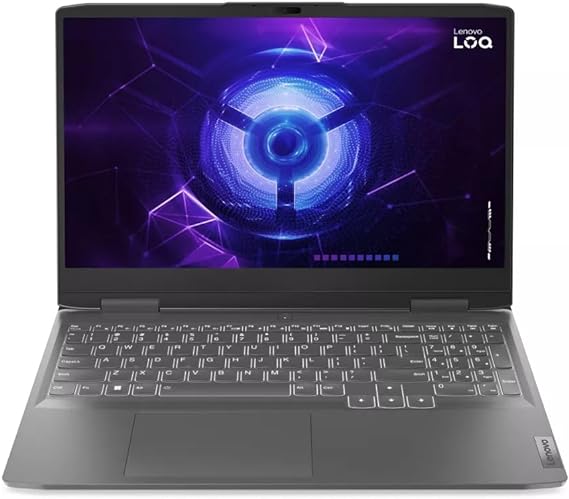
| Model Name | LOQ |
| Screen Size | 15.6 Inches |
| Hard Disk Size | 512 GB |
| CPU Model | Core i5 |
| Ram Memory Installed Size | 16 GB |
| Operating System | Windows 11 Home |
| Graphics Card Description | Dedicated NVIDIA GeForce RTX 3050 |
| CPU Speed | 4.6 GHz |
While the Lenovo LOQ gaming laptop is marketed towards gaming enthusiasts, it also makes an excellent choice for Python programming on a budget. Here’s why:
- Powerful Processor: The 13th Generation Intel Core processors offer superior performance, enabling smooth multitasking which is essential for Python development. Whether you’re running intensive algorithms or debugging code, having a powerful processor ensures efficiency.
- Graphics Performance: Although primarily aimed at gaming, the NVIDIA GeForce RTX 3050 graphics card provides ample horsepower for tasks beyond gaming, including data visualization and machine learning applications often encountered in Python programming.
- High-Resolution Display: The 144Hz 15.6″ FHD display ensures a crisp and clear viewing experience, which is beneficial when working with code for extended periods. The high refresh rate also reduces eye strain, enhancing productivity.
- Comfortable Keyboard: The signature Lenovo gaming keyboard with 1.5mm key travel offers tactile feedback, making typing comfortable during long coding sessions. A comfortable typing experience is crucial for programmers who spend hours at the keyboard.
- Durable Design: The durable chassis and effective cooling system ensure longevity and stability, which are important factors for a machine that will be used intensively for programming tasks over time.
- Battery Life and Rapid Charging: With up to 6 hours of battery life and Super Rapid Charge technology, you can work on the go without constantly worrying about running out of power. The quick charging feature also provides convenience, allowing you to get back to work swiftly.
Overall, the Lenovo LOQ gaming laptop offers a compelling combination of performance, durability, and affordability, making it a solid choice for budget-conscious Python programmers who still require capable hardware to support their development needs.
6. ASUS Zenbook 14 Flip OLED Laptop

| Model Name | Zenbook 14 Flip |
| Screen Size | 14 Inches |
| Color | Ponder Blue |
| CPU Model | Core i7 |
| Ram Memory Installed Size | 16 GB |
| Operating System | Windows 11 Home |
| Special Feature | Dolby |
| Graphics Coprocessor | Intel Iris |
The ASUS Zenbook 14 Flip OLED is an excellent choice for Python programming, even though it’s a premium laptop, it offers features that justify its value within the “budget” category for those who need powerful and versatile machines. Here’s why:
- Powerful Performance: The Intel Core i7-1360P processor with 12 cores and 16 threads ensures that you can efficiently handle Python programming, especially when running multiple scripts or using resource-intensive libraries. This makes it suitable for both beginner and advanced Python tasks.
- Ample Storage and Memory: With 16GB of LPDDR5 RAM and a 1TB NVMe PCIe 4.0 SSD, you have more than enough memory and storage to manage large datasets, virtual environments, and a multitude of Python packages without any lag. Fast storage also speeds up data access and reduces load times.
- High-Quality Display: The 14-inch WQXGA+ OLED NanoEdge touchscreen offers a high-resolution, vibrant display, perfect for long coding sessions. The PANTONE Validated and Dolby Vision certification ensures color accuracy, which is useful for those working on data visualization or GUI-based Python projects.
- Versatility: The 2-in-1 design of the Zenbook 14 Flip allows you to switch between laptop and tablet modes, which can be handy when using Python-based educational apps or when reading through documentation. The touchscreen capability adds an additional layer of interaction for specific Python applications that may benefit from touch input.
- Future-Proof Connectivity: The laptop comes with extensive connectivity options, including Wi-Fi 6E for fast internet connections, and multiple Thunderbolt 4 ports, which can support external monitors or fast data transfer. These features make it adaptable to various programming environments, whether you are working from home or in a collaborative setting.
- Intel Evo Platform: The inclusion of the Intel Evo Platform ensures a balanced combination of performance, battery life, and responsiveness, which is essential for programming tasks that might stretch over extended periods.
While this ASUS Zenbook 14 Flip OLED might be on the higher end of what some would consider budget, its powerful specs, versatile design, and high-quality build make it an exceptional investment for anyone serious about Python programming.
Conclusion
So, if you’re diving into Python in 2025—whether for coding projects, data science, or just learning the ropes—you don’t have to break the bank. A solid budget laptop with enough power and comfort can carry you a long way. Just pick the one that feels right for your workflow and get coding.
Also Read: Best Deep Learning Laptops
FAQs
Not at all. Python runs smoothly on modest hardware. As long as your laptop has enough RAM (8GB or more) and a decent processor, you’ll be fine.
Yes, for most beginners and intermediate users, 8GB is perfectly fine. If you plan to run heavier tasks like machine learning, you might want 16GB for extra comfort.
Absolutely. Learning Python doesn’t require top-tier specs. A budget laptop can handle coding, running scripts, and using popular IDEs like PyCharm or VS Code with ease.
All three work well. If you’re on a budget, Windows or Linux laptops usually give more value. Linux is especially popular among programmers, but stick with what feels comfortable to you.
Yes, if you take care of it. Even a modest machine can serve you for years of learning and building projects. What matters most is your consistency and curiosity—not the price tag of your laptop.
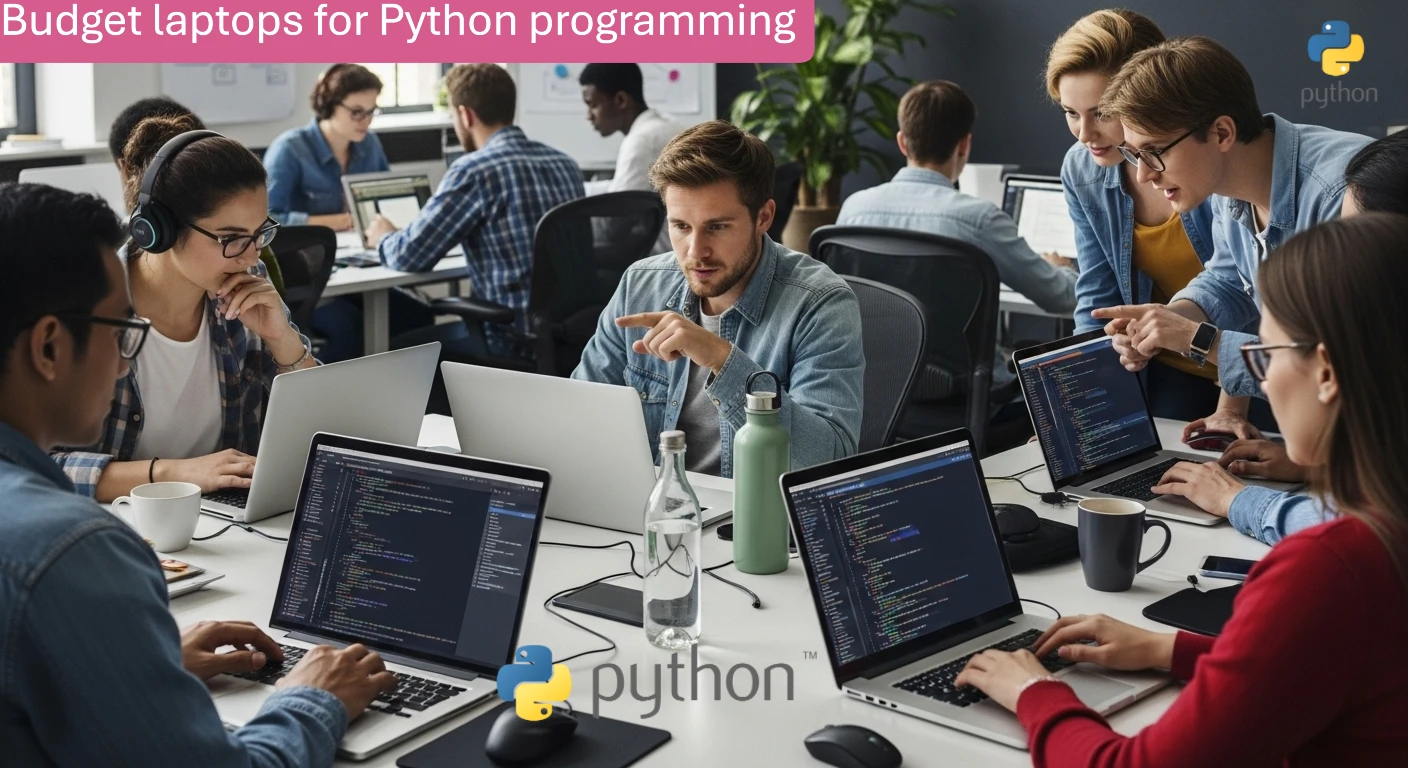
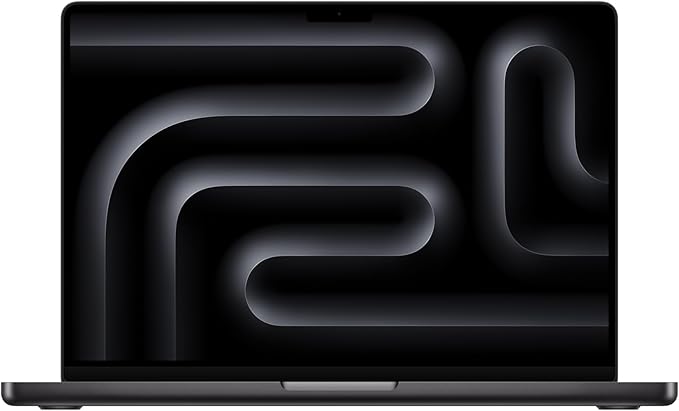







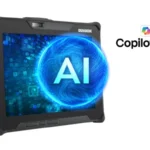


Great guide for budget-friendly laptops for Python. The detailed specs and recommendations make choosing the right laptop so much easier. Thanks for the helpful insight.
Good list of budget laptops for Python programming. I appreciate the detailed specs and recommendations—super helpful for students and beginners. Thanks for the insights.